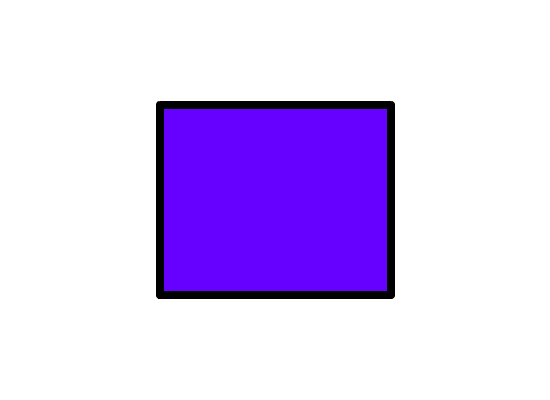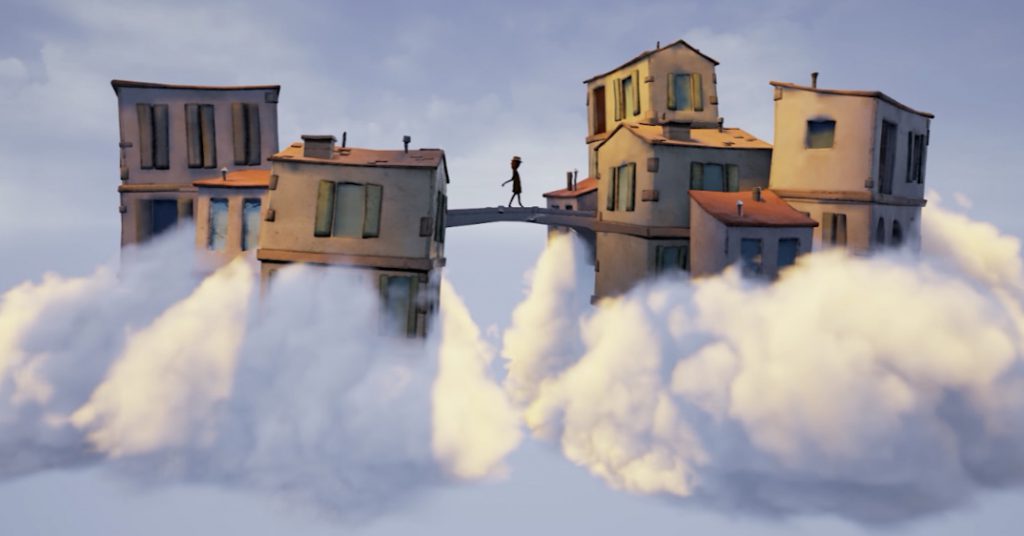When we first started to make fiction films we had no clue what we were doing. What happened was that we’d set up a camera and shoot everything in one shot, from a wide angle. The result looked something like a theater play.
The first websites we made were just pieces of text with a couple of hyperlinks and buttons. We started to add pictures, very cool gifs and awesome flash animations, but we had no clue what the possibilities of interactivity realy were.

This awesome gif was originally a flash animation that I made when I was 15 (2001).
Throughout time, every new medium was first looked at with eyes that were used to media we already knew. This phenomenon is called ‘the horseless carriage syndrome’. It stems from when the first cars were introduced, which looked like carriages without horses. The syndrome was introduced by media philosopher Marshall McLuhan. Right now we stand at the beginning of virtual reality; the precursor of total immersion (because that would obviously be the Star Trek holodeck). As history tends to repeat itself, I thought we might fall into this same horseless carriage syndrome with VR. So I went looking for it to see if we do.

The ‘horseless carriage syndrome’.
One thing I found is the way Eugene Chung from Penrose Studios thinks about VR. The way I see it is that one of the biggest aspects that makes VR the medium that it is, is the fact that the viewer itself can be in the film. Yes, there are some movies that break the fourth wall; where actors talk directly into the camera. In modern theater or stand up this even happens quite often. But when it does, there always remains that distance between the audience and the stage or screen. In VR a character can look you straight in the eye and walk around you. That makes you present in that space, at that moment, together with the characters of the story. There was never a wall to begin with.
Eugene seems to be very successful in bringing this wall back into VR, where he feels it belongs. In that way it looks like he’s trying to master using VR the way he would use film. He does this by shrinking the whole setting the viewer is placed in, including its characters. This way the viewer doesn’t feel like a ghost when his presence is not confirmed.
My guess is that you might feel more like a God, looking down on the world. After all, between a God and his world there is always a fourth wall. I don’t think anybody ever looked their God straight in the eyes while praying. What Eugene does is smart. He makes it possible to continue using other aspects of VR while keeping the fourth wall of film. Still, I wonder… if I were to tell a certain story that included a fourth wall, why would I choose to tell it in VR?
I do think there is still place for VR stories with a fourth wall. For instance Terres de Hommes’ VR experience ‘Amani’, in which you witness the life of a childslave. Here the fact that you’re there without actually ‘being there’ is part of the way they want to tell the story to you. It makes you feel helpless in the situation. It’s exactly how you’d want to make someone feel right before you’d tell them they’re able to help these kind of girls, with some money.
These are two examples where VR makers made it work to not acknowledge the presence of the viewer, but I could tell you far more examples where it doesn’t. I think the important question to ask is: does it serve a purpose to put the fourth wall back in VR? Also, does the use of the medium still serve a purpose if you do? I’ll write about this in my next blog.

